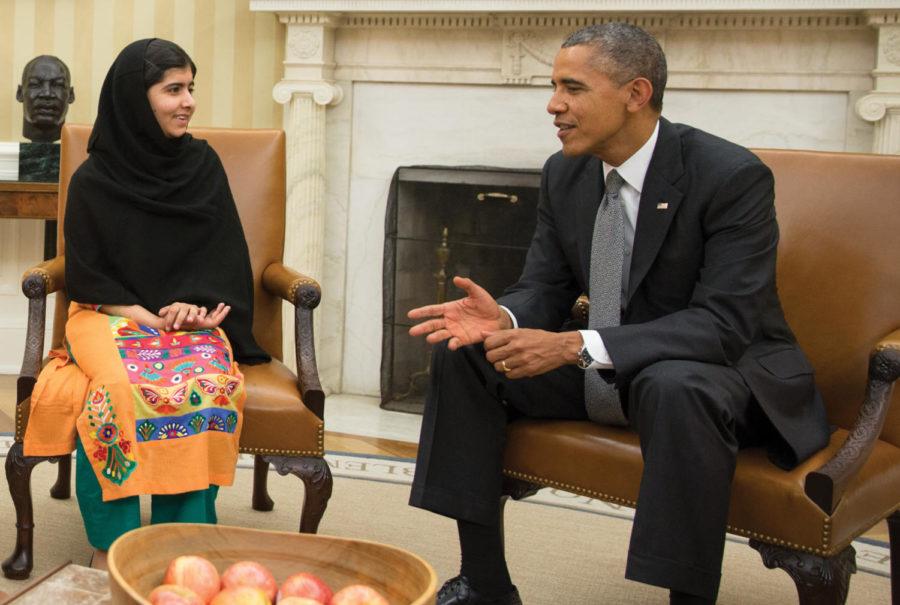Greer: Malala the lionheart
Malala Yousafzai recently appeared on Jon Stewart’s “The Daily Show,” advocating for pacifism. Yousafzai met with President Barack Obama in the Oval Office on Oct. 11.
October 14, 2013
I admit, only grudgingly, that sometimes I take breaks from desk work to skim my Facebook feed. Yesterday, as I idly scanned the relationship drama and scandalous selfies, something caught my eye; there was a familiar name above a video link.
The title of the video “16-Year-Old Malala Yousafzai Leaves Jon Stewart Speechless With Comment About Pacifism.”
Because I have always been a passionate supporter of women’s rights in developing countries, I knew Malala’s story well. I had written about her in my high school newspaper after she was nearly murdered by a member of the Taliban a little over a year ago.
Malala got the Taliban’s attention by anonymously advocating women’s education rights in her blog. Not long after, while Malala was on a school bus, a Taliban boarded and gunned her down point-blank.
Miraculously, the young woman survived. She returned with a vengeance, leading a charge to liberate oppressed women; she has been campaigning worldwide and was a 2013 Nobel Peace Prize nominee for her fearless advocacy of women’s rights.
When I clicked on the video link, I was unsure whether her comment on pacifism was a dismissal of peace in times of war or a plea for her fellow human beings to strive toward peace. I should have known, given her outspokenness and iron strength of character, her statement would be the latter of the two.
Jon Stewart asked her about potential future attempts to take her life; the Taliban have reiterated their threats since her recovery.
Malala responded very simply:
“I started thinking about that, and I used to think that the Talib would come, and he would just kill me. But then I said ‘if he comes, what would you do Malala?’ then I would reply to myself, ‘Malala, just take a shoe and hit him.’ But then I said ‘if you hit a Talib with your shoe, then there would be no difference between you and the Talib … you must fight others but through peace and through dialogue and through education.’ Then I said I will tell him how important education is and that ‘I even want education for your children as well,’ and I will tell him, ‘that’s what I want to tell you, now do what you want.'”
Like Jon Stewart, I clapped my hands over my mouth and stared at the suddenly blurry young woman on my computer screen. What faith she must possess, to understand that violence would make her no better than the men trying to take her own life?
Most people are self-professed pacifists right up until the moment their lives are threatened with violence; to overcome the deep-rooted defense mechanism that every human possesses and calmly stare death in the face is nearly impossible.
But that is exactly what Malala did and continues to do every day. She speaks all over the world, sowing the seeds of hope among oppressed women and inspiring those who are able to join the cause.
Malala is walking in the footsteps of peaceful people that have changed the world. “This is the philosophy of nonviolence that I have learned from Ghandi, Bacha Khan and Mother Teresa,” she said in a speech to the U.N. General Assembly.
Anyone can lash out violently when they are hurt; it takes a truly incredible individual to stand before the enemy and say “do what you want.”

















